Gardening in Pots: Tips and Techniques
Gardening in pots is not just a hobby; it's an adventure that can transform any space into a lush oasis! Whether you have a sprawling backyard or a tiny balcony, container gardening allows you to cultivate beautiful plants with ease. Imagine stepping out onto your patio, greeted by vibrant flowers or fresh herbs, all thriving in pots that suit your style. But how do you get started? What are the secrets to successful container gardening? In this article, we’ll explore practical tips and techniques that can help you grow beautiful plants in pots, regardless of your space or experience level.
When it comes to container gardening, selecting the right pots is crucial for the health and vitality of your plants. Think of pots as the homes for your plants; they need to be comfortable and suitable for their needs. Start by considering the size of the pot. A larger pot can hold more soil, which means more nutrients and moisture for your plants. However, be cautious—too large a pot can lead to overwatering. Next, look at the material of the pot. Clay pots are porous and allow for good air circulation, while plastic pots are lightweight and retain moisture better. Lastly, ensure your pots have adequate drainage holes to prevent water from accumulating at the bottom, which can lead to root rot.
The foundation of any successful garden lies in the soil. Using the right soil mix and fertilizers can significantly impact plant growth. Think of soil as the buffet for your plants; it needs to be rich in nutrients and well-draining. A good potting mix typically contains a blend of peat moss, vermiculite, and perlite. This combination provides excellent aeration and moisture retention. But don’t forget about fertilization! Just like we need vitamins and minerals, plants require nutrients to thrive. Understanding the types of fertilizers available is key.
Different plants have different needs, and that includes their soil. Here are some popular soil mixes tailored for various categories of plants:
| Plant Type | Recommended Soil Mix |
|---|---|
| Herbs | Well-draining potting mix with added sand |
| Flowers | All-purpose potting soil with organic matter |
| Vegetables | Rich, nutrient-dense mix with compost |
When it comes to fertilization, you have two main options: organic and synthetic fertilizers. Organic fertilizers are derived from natural sources and improve soil health over time, while synthetic fertilizers provide immediate nutrients but can sometimes harm the soil ecosystem in the long run. Choosing the right type depends on your gardening philosophy and the needs of your plants.
Timing and technique are everything when it comes to fertilizing your potted plants. Generally, it’s best to fertilize during the growing season—spring and summer—when plants are actively growing. Use a diluted solution of fertilizer every few weeks, but be careful not to overdo it. Too much fertilizer can burn your plants! A good rule of thumb is to follow the instructions on the fertilizer package and observe your plants for signs of nutrient deficiency.
Proper watering is essential for container gardening. Overwatering is one of the most common mistakes new gardeners make. To keep your plants hydrated without drowning them, consider these effective watering techniques:
- Water early in the morning or late in the afternoon to minimize evaporation.
- Check the soil moisture by sticking your finger about an inch into the soil; if it feels dry, it’s time to water.
- Use pots with drainage holes to allow excess water to escape.
Selecting the right plants for your pots is vital for success. Not all plants thrive in containers, so it’s essential to choose varieties that are suited for pot life. Some plants prefer the cozy confines of a pot, while others may struggle. Consider your climate, space, and the amount of sunlight your pots will receive.
Understanding the differences between annual and perennial plants can help you make informed decisions for your potted garden. Annuals, like petunias and marigolds, bloom for one season and then die, making them perfect for seasonal color. On the other hand, perennials, such as lavender and hostas, return year after year, providing lasting beauty with minimal effort.
Growing herbs and vegetables in pots can be incredibly rewarding. Imagine snipping fresh basil for your pasta or plucking ripe tomatoes from your patio! Some of the best varieties for container gardening include:
- Basil
- Cherry Tomatoes
- Green Onions
- Parsley
These plants not only thrive in pots but also add flavor to your meals and beauty to your space.
Q: Can I use regular garden soil in pots?
A: It's best to use a potting mix designed for containers, as garden soil can compact and restrict drainage.
Q: How often should I water my potted plants?
A: Watering frequency depends on the plant type and weather conditions, but checking soil moisture regularly is key.
Q: What should I do if my plants are not growing?
A: Check for issues like inadequate light, poor drainage, or nutrient deficiencies. Adjust your care routine accordingly.
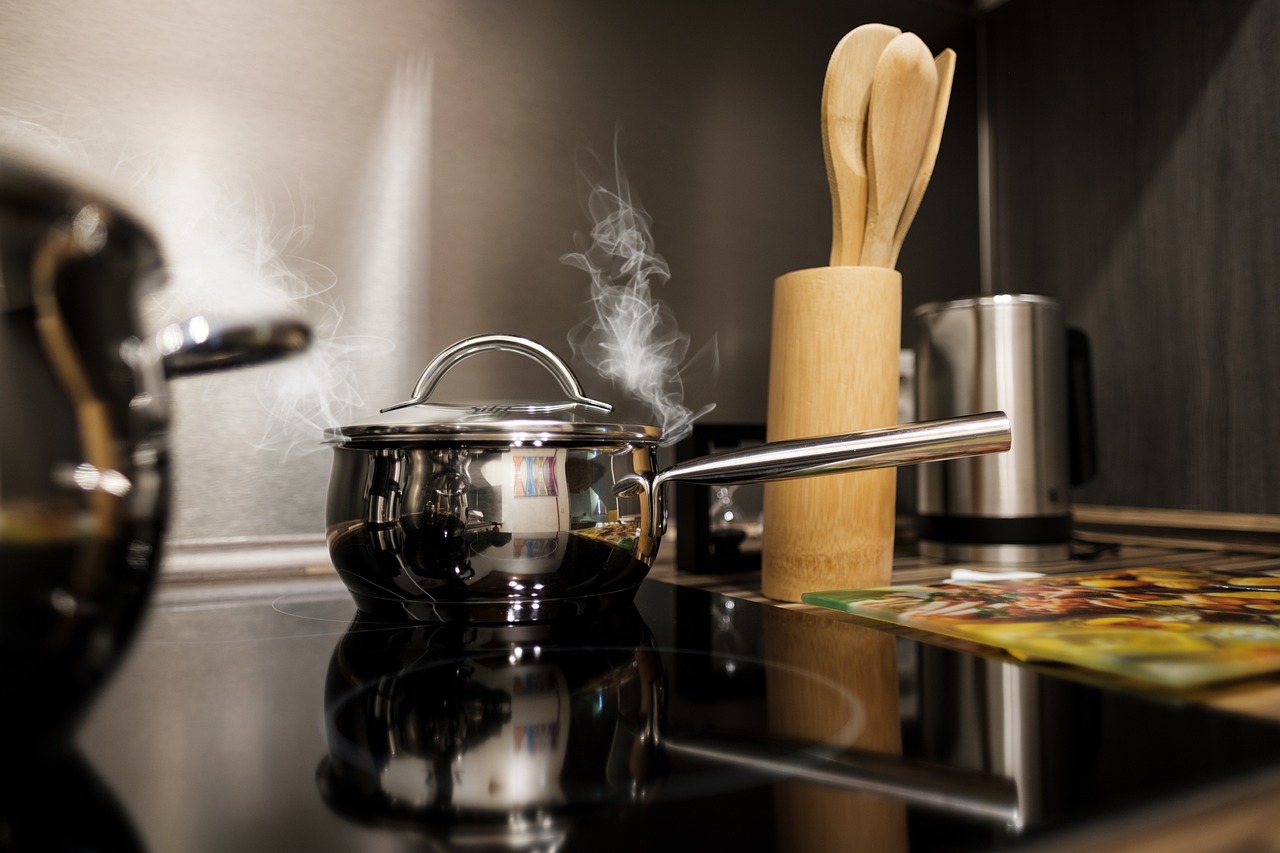
Choosing the Right Pots
When it comes to container gardening, selecting the right pots is nothing short of essential. Think of your pots as the homes for your plants; just like we need a comfortable and suitable living space, plants require an environment that supports their growth and health. So, what should you consider when choosing pots? Let's dive into the important factors!
First and foremost, size matters. The size of the pot directly affects the plant's ability to grow. A pot that's too small can restrict root development, leading to stunted growth or even plant death. Conversely, an oversized pot can hold excess moisture, which may cause root rot. As a general rule of thumb, choose a pot that is at least 6-12 inches deep for most plants, but always check the specific needs of the species you’re working with.
Next, the material of the pot plays a significant role in how well your plants will thrive. Here are some common materials and their characteristics:
| Material | Pros | Cons |
|---|---|---|
| Plastic | Lightweight, inexpensive, retains moisture | Can heat up quickly in the sun, less aesthetically pleasing |
| Clay/Terracotta | Porous, allows for air circulation, attractive | Heavy, can dry out quickly |
| Ceramic | Variety of styles, retains moisture well | Heavy, can be expensive |
| Wood | Natural look, good insulation | Can rot if not treated, may require more maintenance |
Drainage is another critical aspect. Without proper drainage, water can accumulate at the bottom of the pot, leading to root rot. Always choose pots with drainage holes, or consider adding a layer of gravel or stones at the bottom of your pot to enhance drainage. If you’re using decorative pots without holes, you can use them as outer containers and place a plastic pot inside that has drainage holes.
Lastly, don't forget about the style of the pot! While functionality is key, the aesthetics of your pots can enhance the overall look of your garden or patio. Consider how the color and design of the pot will complement your plants and the surrounding environment. After all, gardening is not just about growing plants; it’s also about creating a beautiful space that brings joy to your life!
In summary, when choosing the right pots for your container garden, remember to consider:
- Size: Ensure it's suitable for the plant's root system.
- Material: Opt for one that balances aesthetics and functionality.
- Drainage: Always prioritize proper drainage to keep roots healthy.
- Style: Choose pots that enhance the beauty of your garden.
By keeping these factors in mind, you’ll be well on your way to creating a thriving container garden that not only looks great but also supports the health of your plants!
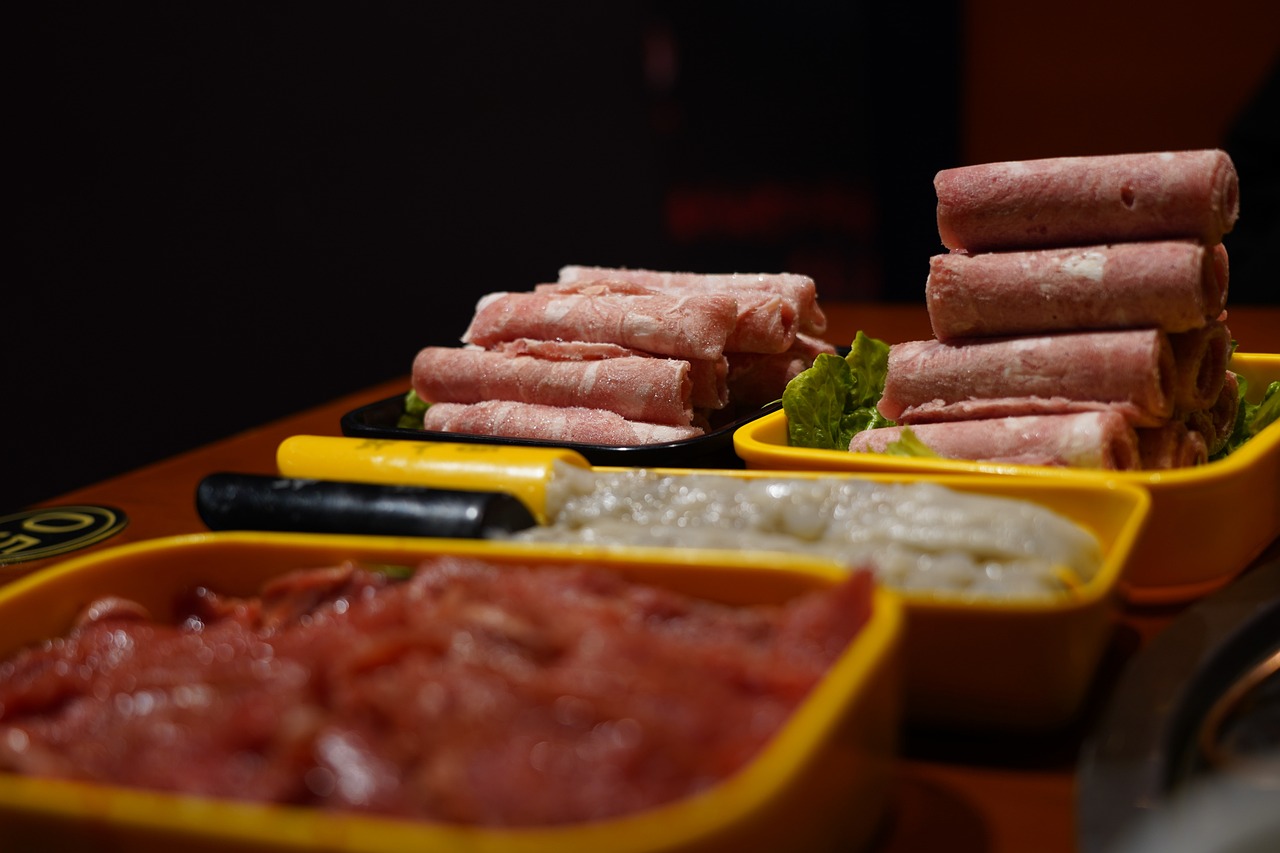
Soil and Fertilization
When it comes to container gardening, the foundation of your potted plants starts with the right soil mix. A good soil mix is like a cozy blanket for your plants, providing them with the warmth and nutrients they need to thrive. Without it, your plants might feel like they’re trying to grow in a desert! The soil you choose can significantly impact the health and growth of your plants, so let’s dive into what makes a great soil mix.
First off, you need to consider the drainage. Plants in pots are more susceptible to overwatering, which can lead to root rot. Therefore, you want a soil that allows excess water to escape while retaining just enough moisture for your plants. A well-draining mix typically includes components like perlite, vermiculite, or sand. These materials create air pockets that help with drainage, ensuring your plants don’t drown in their own pot!
Next, let’s talk about nutrients. Your plants need food, just like you do! This is where fertilizers come into play. There are two main types of fertilizers: organic and synthetic. Organic fertilizers, such as compost or well-rotted manure, are derived from natural sources and can improve soil structure while providing a slow release of nutrients. On the other hand, synthetic fertilizers offer a quick nutrient boost but may not improve the soil quality in the long run. Choosing the right type depends on your gardening philosophy and the specific needs of your plants.
Different plants have different requirements, and understanding these can help you choose the right soil mix. For example, herbs like basil and parsley thrive in a light, well-draining mix that allows their roots to breathe. On the contrary, vegetables such as tomatoes and peppers prefer a richer mix that holds more moisture and nutrients. Here’s a quick overview of suitable soil mixes for various plant categories:
| Plant Type | Recommended Soil Mix |
|---|---|
| Herbs | Light, well-draining mix with perlite or sand |
| Flowers | Rich, organic mix with compost |
| Vegetables | Nutrient-rich mix with good moisture retention |
When it comes to fertilizing your plants, the choice between organic and synthetic fertilizers can be a bit overwhelming. Organic fertilizers are often slower to act but provide a more balanced nutrient profile, fostering healthy soil life. In contrast, synthetic fertilizers deliver a quick hit of nutrients, which can be beneficial for fast-growing plants. However, they can also lead to nutrient burn if not used carefully. So, which one should you choose? It boils down to your gardening style and the specific needs of your plants.
Timing is everything in gardening! For most potted plants, a good rule of thumb is to fertilize during the growing season, which typically spans from spring to early fall. You can apply fertilizers every 4-6 weeks, but always follow the instructions on the label to avoid over-fertilizing. Remember, it’s better to under-fertilize than to overdo it. When applying, make sure to water your plants before and after fertilization to help distribute the nutrients evenly throughout the soil.
In conclusion, understanding the importance of soil and fertilization can make a world of difference in your container gardening journey. It’s not just about sticking a plant in a pot; it’s about creating a thriving ecosystem that supports growth and health. So, roll up your sleeves, get your hands dirty, and watch your potted plants flourish!
- What type of soil is best for container gardening? A well-draining, nutrient-rich soil mix is ideal, often enhanced with perlite or vermiculite.
- How often should I fertilize my potted plants? Typically, every 4-6 weeks during the growing season is recommended.
- Can I use regular garden soil in pots? It’s not advisable as garden soil can become compacted and may not drain well in containers.
- What are the signs of overwatering? Yellowing leaves and a mushy stem can indicate that your plants are getting too much water.
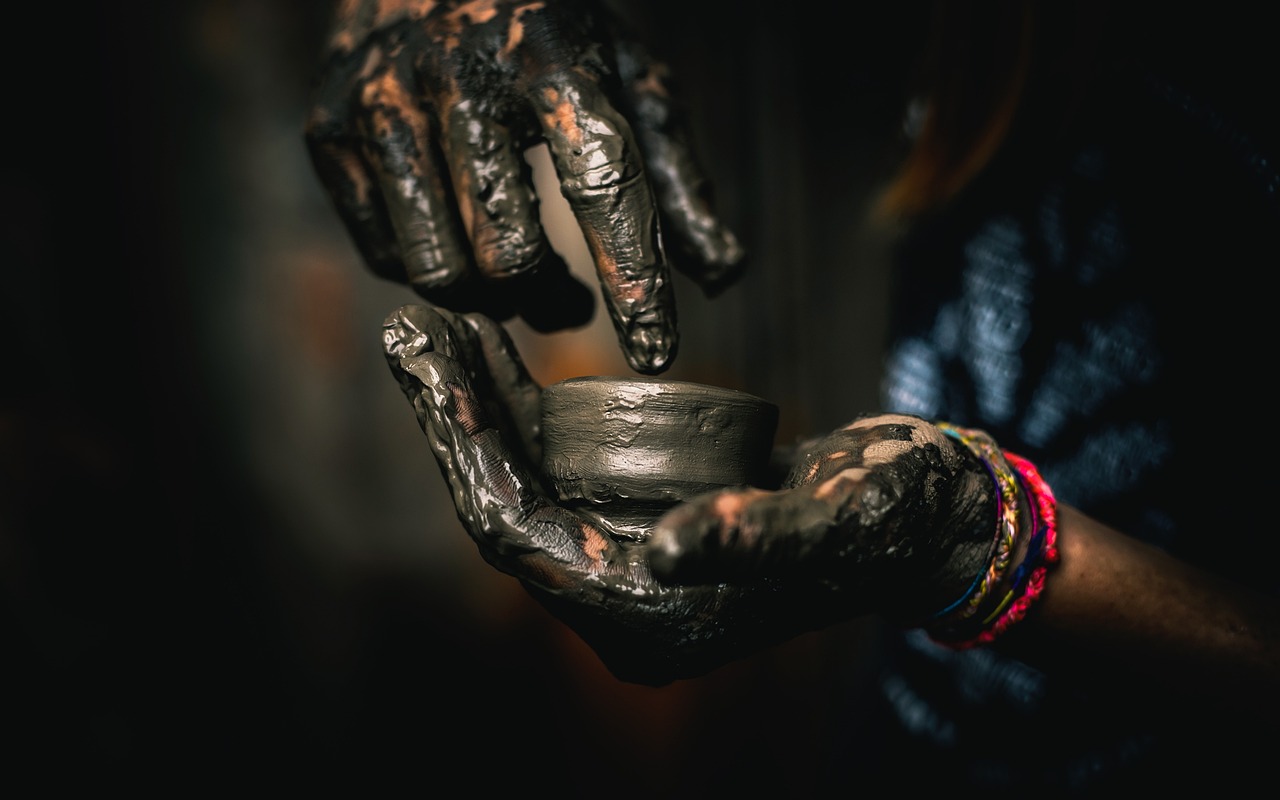
Types of Soil Mixes
When it comes to container gardening, the right soil mix can make all the difference between a flourishing plant and a sad, wilting one. Just like how we need a balanced diet to thrive, plants require specific nutrients and textures in their soil to grow strong and healthy. Different plants have different needs, and understanding these can lead to a successful gardening experience.
For starters, let’s talk about the basic types of soil mixes you might encounter. There are three main categories: potting soil, seed starting mix, and specialty mixes. Each serves a unique purpose:
- Potting Soil: This is the all-purpose mix that’s ideal for most potted plants. It usually contains a blend of compost, peat moss, and perlite or vermiculite, which helps with drainage and aeration.
- Seed Starting Mix: If you’re looking to grow plants from seeds, this mix is incredibly light and fluffy, allowing young roots to penetrate easily. It's typically free of fertilizers to prevent burning delicate seedlings.
- Specialty Mixes: These are designed for specific types of plants. For example, cactus and succulent mixes are gritty and well-draining, while orchid mixes contain larger chunks of bark or coconut coir to provide air to the roots.
Now, let’s dive deeper into some popular soil mixes based on the type of plants you’re growing:
| Plant Type | Recommended Soil Mix | Main Ingredients |
|---|---|---|
| Herbs | Herb Mix | Compost, peat moss, perlite |
| Flowers | Flower Potting Mix | Peat moss, compost, vermiculite |
| Vegetables | Vegetable Garden Mix | Compost, soil, and organic matter |
| Cacti/Succulents | Cactus Mix | Sand, perlite, and peat |
| Orchids | Orchid Bark Mix | Bark, charcoal, and sphagnum moss |
Choosing the right soil mix is akin to picking the right shoes for a marathon; you wouldn’t run in flip-flops, right? The right mix not only supports plant growth but also helps in managing moisture levels, ensuring that your plants don’t drown or dry out. So, whether you’re nurturing herbs for your kitchen or vibrant flowers for your garden, remember that the soil is your plant’s foundation. Invest in quality, and you’ll be rewarded with lush, thriving greenery!
Q: How often should I change the soil in my pots?
A: It’s generally recommended to refresh your potting soil every 1-2 years, especially for long-term plants. This helps replenish nutrients and prevent soil compaction.
Q: Can I use garden soil in pots?
A: While it’s possible, garden soil can be too dense for pots and may not drain well. It’s better to use a mix specifically formulated for container gardening.
Q: What if my plants are still struggling despite using the right soil?
A: If your plants are struggling, consider other factors like light, water, and temperature. Sometimes, it’s not just about the soil but the overall environment!
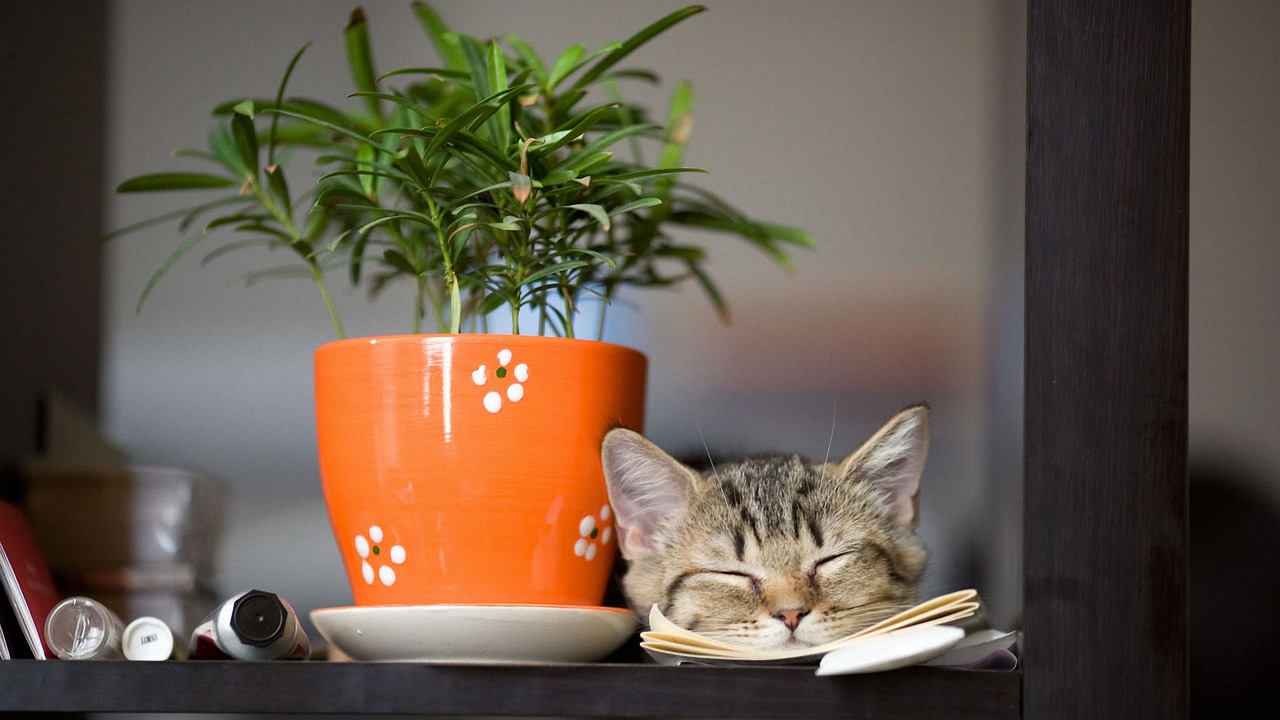
Organic vs. Synthetic Fertilizers
When it comes to nurturing your potted plants, the choice between organic and synthetic fertilizers is a hot topic among gardeners. Both types have their own set of benefits and drawbacks, and understanding these differences can help you make an informed decision that aligns with your gardening philosophy. So, what’s the scoop on these two fertilizer types?
Organic fertilizers are derived from natural sources, such as compost, manure, or plant-based materials. They not only enrich the soil with essential nutrients but also improve its structure and water retention capabilities. Think of organic fertilizers as a wholesome meal for your plants—full of vitamins and minerals that promote long-term health and vitality. Plus, they contribute to a healthier ecosystem by encouraging beneficial microorganisms in the soil.
On the other hand, synthetic fertilizers are chemically manufactured and provide a quick nutrient boost to your plants. They are often more concentrated than organic options, which means you can achieve rapid results. However, relying too heavily on synthetic fertilizers is like giving your plants a sugar rush; they may grow quickly, but they can also lead to nutrient imbalances and long-term soil degradation. It’s essential to strike a balance between quick fixes and sustainable practices.
| Aspect | Organic Fertilizers | Synthetic Fertilizers |
|---|---|---|
| Source | Natural materials | Chemically manufactured |
| Nutrient Release | Slow and steady | Fast-acting |
| Soil Health | Improves soil structure | Can degrade soil quality over time |
| Environmental Impact | Eco-friendly | Potential for runoff and pollution |
Now, you might be wondering, "Which one should I use for my potted plants?" The answer often lies in your gardening goals. If you’re looking for a sustainable approach that supports long-term plant health, then organic fertilizers are your best bet. They’re perfect for those who want to create a thriving ecosystem in their pots. But if you’re aiming for immediate results, synthetic fertilizers can give your plants that much-needed boost. Just remember to use them wisely and not to overdo it.
Ultimately, the choice between organic and synthetic fertilizers boils down to your personal gardening style. Many gardeners opt for a hybrid approach, using both types at different times to maximize their plants' health. Just like cooking, it’s all about finding the right balance of ingredients to create a delicious outcome!
- Can I mix organic and synthetic fertilizers? Yes, many gardeners find success using both, but be mindful of the amounts to avoid over-fertilizing.
- How often should I fertilize my potted plants? Generally, every 4-6 weeks during the growing season is a good rule of thumb, but always check specific plant needs.
- Are organic fertilizers more expensive? They can be, but consider the long-term benefits for soil health and plant vitality.
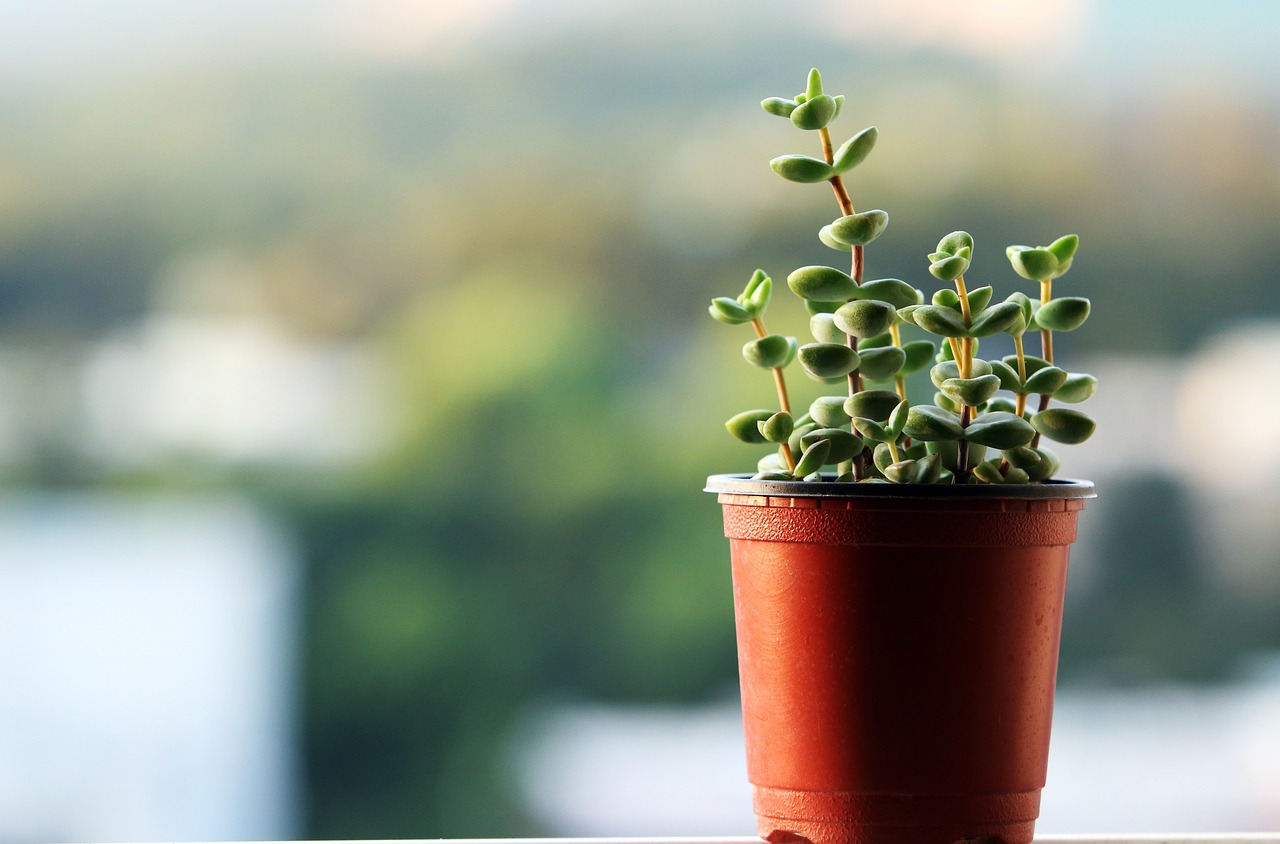
When and How to Fertilize
When it comes to container gardening, knowing when and how to fertilize your plants can make a world of difference. Think of fertilization as a special meal for your plants; just like we need a balanced diet to thrive, plants require essential nutrients to grow strong and healthy. Timing is key, as the nutritional needs of your plants change throughout their life cycle. So, when should you start feeding your plants?
Generally, the best time to begin fertilizing is when your plants start showing signs of growth in the spring. This is when they are waking up from their winter slumber and are eager to soak up nutrients. For most plants, a good rule of thumb is to fertilize every four to six weeks during the growing season, which typically runs from spring through early fall. However, keep in mind that some plants may require more frequent feeding, while others thrive on less. Always observe your plants; they will tell you what they need!
Now, let’s talk about the how. There are several ways to apply fertilizer, and the method you choose can depend on the type of fertilizer you are using:
- Granular Fertilizers: These are typically sprinkled on the soil surface and then watered in. Be sure to follow the manufacturer’s instructions regarding the amount to use, as over-fertilizing can burn your plants.
- Liquid Fertilizers: These can be mixed with water and applied directly to the soil or as a foliar spray. Liquid fertilizers are often absorbed more quickly, making them an excellent choice for a quick nutrient boost.
- Slow-Release Fertilizers: These are mixed into the soil at planting time and release nutrients gradually over time. This is a great option for busy gardeners who want to set it and forget it!
It’s also important to consider the type of fertilizer you’re using. Organic fertilizers, like compost or fish emulsion, release nutrients slowly and improve soil health over time. On the other hand, synthetic fertilizers provide a quick nutrient boost but can lead to nutrient runoff and soil degradation if not used responsibly. If you’re unsure, a balanced fertilizer with equal parts nitrogen, phosphorus, and potassium (like a 10-10-10) is a safe bet for most container plants.
Lastly, always remember to water your plants after fertilizing. This helps to wash the nutrients down to the roots where they can be absorbed effectively. If you fertilize dry soil, you risk burning the roots, which can damage your plants. A little bit of care in this process goes a long way in ensuring your plants flourish!
In summary, fertilization is a crucial part of container gardening that can significantly impact your plants' health and growth. By paying attention to the timing, method, and type of fertilizer you use, you can create a thriving garden in pots that will bring you joy and satisfaction throughout the growing season.
Q: How often should I fertilize my potted plants?
A: Most potted plants benefit from fertilization every four to six weeks during the growing season. However, always check the specific needs of your plants.
Q: Can I use garden soil in my pots?
A: It's best to use a high-quality potting mix designed for container gardening, as garden soil can compact and limit drainage.
Q: What are the signs that my plants need fertilizer?
A: Yellowing leaves, stunted growth, and poor flowering can indicate that your plants need more nutrients.
Q: Is it possible to over-fertilize my plants?
A: Yes, over-fertilization can lead to nutrient burn, which can damage or kill your plants. Always follow the recommended guidelines on the fertilizer package.
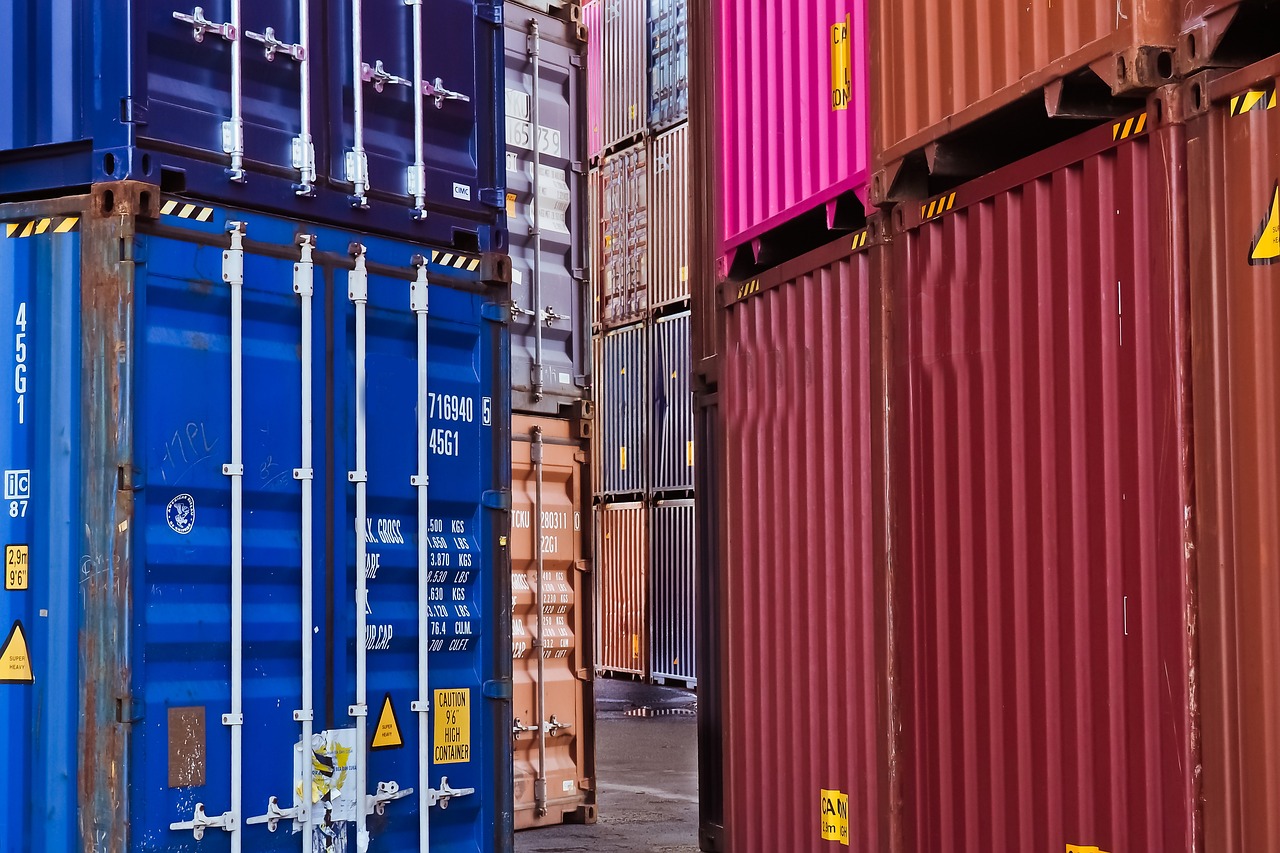
Watering Techniques
When it comes to container gardening, mastering the art of watering is akin to learning the rhythm of a dance. Too little water, and your plants will wither like a forgotten memory; too much, and you risk drowning them in a deluge. So, how do you strike that perfect balance? First, it’s essential to understand that pots dry out faster than garden beds due to their limited soil volume and exposure to air. This means you need to be vigilant and adjust your watering routine based on the weather, the type of plants you have, and the size of your containers.
One effective technique is the finger test. Simply stick your finger about an inch into the soil. If it feels dry, it’s time to water. If it’s still moist, hold off for a day or two. This method not only prevents overwatering but also helps you connect with your plants on a more personal level. Imagine your plants whispering their needs to you—how cool is that?
Another crucial aspect of watering is the method you use. Here are a couple of techniques that can make a world of difference:
- Bottom Watering: Place your pots in a basin of water and let them absorb moisture from the bottom up. This encourages deep root growth and helps prevent the topsoil from becoming compacted.
- Drip Irrigation: If you’re serious about container gardening, consider investing in a drip irrigation system. It delivers water directly to the roots, ensuring that your plants receive consistent moisture without the risk of overwatering.
Also, remember that time of day plays a significant role in how effectively your plants absorb water. Early morning is often the best time to water. At this hour, the temperatures are cooler, and the plants can take up the moisture before the sun starts to evaporate it. Plus, watering in the morning helps prevent diseases that can arise from damp foliage left overnight.
Finally, don’t forget to consider the type of plants you’re growing. Some plants, like succulents, prefer drier conditions, while others, like ferns, thrive in moisture-rich environments. Tailoring your watering routine to the needs of your specific plants will lead to a flourishing container garden that’s the envy of your neighborhood.
In summary, effective watering techniques involve understanding your plants’ needs, using the right methods, and being mindful of timing. By paying attention to these factors, you’ll ensure that your container garden not only survives but thrives!
Q: How often should I water my potted plants?
A: It depends on the type of plants and environmental conditions. Generally, check the soil moisture regularly and water when the top inch feels dry.
Q: Can I use tap water for my plants?
A: Yes, but let it sit out for 24 hours to allow chlorine to dissipate. Rainwater or distilled water is also great options.
Q: What should I do if I overwater my plants?
A: If you suspect overwatering, let the plant dry out completely before watering again. You may also need to repot it in fresh soil if the roots are rotting.
Q: Is it necessary to fertilize my potted plants?
A: Yes, container plants often require additional nutrients since they have limited soil. Use a balanced fertilizer according to the needs of your specific plants.

Choosing the Right Plants
When it comes to container gardening, selecting the right plants is absolutely crucial for your success. Imagine trying to create a beautiful masterpiece on a canvas that just doesn’t suit your artistic style; the same goes for choosing plants that fit your pots and environment. You want to find plants that not only look good together but also thrive in the conditions you can provide. So, how do you choose the right plants? Here are a few key considerations to keep in mind.
First off, think about your climate. Are you in a sunny area or a shady nook? Different plants have different light requirements, and understanding this can save you from the heartache of watching your precious greens wilt away. For instance, if you have a sunny balcony, you might want to consider sun-loving plants like petunias or geraniums. On the other hand, if you have a shaded spot, opting for shade-tolerant plants like ferns or impatiens would be wise.
Next, consider the size of your pots. Bigger isn’t always better, but you do want to ensure that your plants have enough room to grow. For smaller pots, choose compact varieties such as miniature roses or herbs. If you have larger containers, you can experiment with bigger plants like tomatoes or even small shrubs. Remember, the pot size can directly affect the health and growth of your plants.
Additionally, think about the maintenance level you’re willing to commit to. Some plants require more attention than others. If you’re a busy bee, you might want to stick to low-maintenance varieties like succulents or cacti. If you have more time to dedicate, you could dive into the world of tropical plants or flowering annuals that require regular care and attention.
And let’s not forget about the aesthetic appeal! Mixing different textures and colors can create a stunning visual display. Consider using a combination of focal plants (the stars of your container), fillers (plants that complement the focal point), and spillers (plants that cascade over the edges). This layering technique not only looks appealing but also helps in creating a lush, full garden.
To help you visualize the right plant choices, here’s a quick table summarizing different categories of plants suitable for pots:
| Type of Plant | Best for | Examples |
|---|---|---|
| Flowering Plants | Colorful displays | Petunias, Marigolds |
| Herbs | Culinary use | Basil, Mint |
| Vegetables | Edible gardening | Cherry Tomatoes, Peppers |
| Succulents | Low-maintenance | Aloe Vera, Echeveria |
In summary, choosing the right plants for your container garden is all about understanding your environment, the size of your pots, and the level of care you’re prepared to give. With a little thought and planning, you can create a thriving garden that not only beautifies your space but also brings you joy and satisfaction.
- What are the best plants for beginners? Start with easy-to-grow options like herbs (basil, parsley) and flowering plants (marigolds, petunias).
- Can I grow vegetables in pots? Absolutely! Many vegetables like tomatoes, peppers, and lettuce thrive in containers.
- How often should I water my potted plants? It depends on the plant type and weather, but generally, check the soil moisture and water when the top inch feels dry.
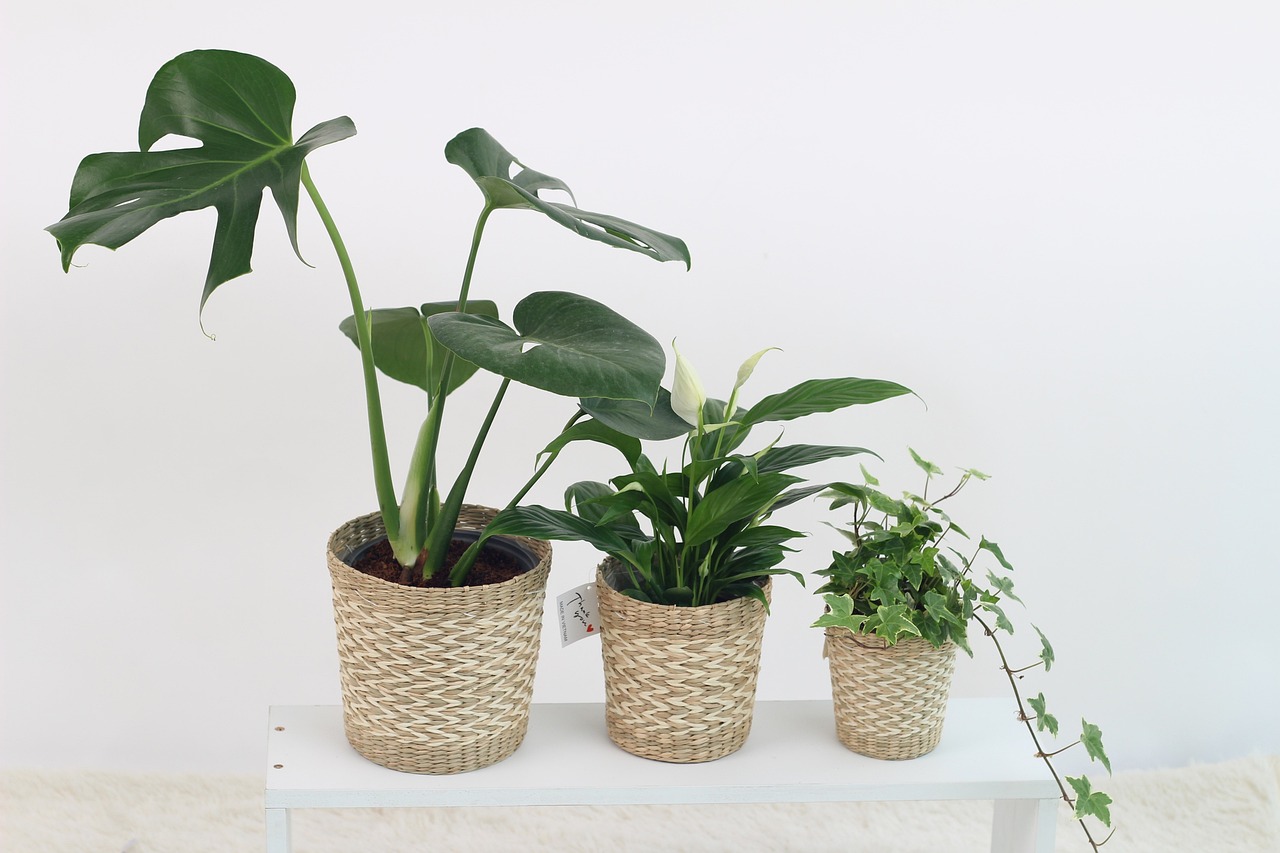
Annuals vs. Perennials
When it comes to container gardening, understanding the difference between annuals and perennials can make all the difference in your success. Annuals are plants that complete their life cycle in a single growing season. This means they germinate, bloom, produce seeds, and die all within one year. They are perfect for those who love to experiment with different colors and styles in their pots each year. Imagine a fresh canvas every spring, with vibrant blooms that can change with the seasons!
On the flip side, perennials are the dependable friends of the gardening world. They live for more than two years, returning year after year with minimal effort. Perennials may take a little longer to establish themselves, but once they do, they can provide consistent beauty and often require less maintenance. Think of them as the reliable long-term investments in your garden, offering a sense of continuity and stability.
Here's a quick comparison to help you decide which type of plant fits your gardening style:
| Feature | Annuals | Perennials |
|---|---|---|
| Life Cycle | One growing season | Multiple growing seasons |
| Maintenance | Higher, requires replanting | Lower, returns each year |
| Bloom Time | Typically longer and more vibrant | Varies, often shorter bloom periods |
| Variety | Wide range of colors and types | Fewer varieties, but many are hardy |
Choosing between annuals and perennials can depend on several factors, including your gardening goals, the climate in your area, and how much time you want to invest in your container garden. If you enjoy changing things up frequently and love experimenting with new plant varieties, annuals might be your best bet. However, if you prefer a low-maintenance garden that provides consistent beauty year after year, perennials could be the way to go.
Ultimately, many gardeners find a balance by incorporating both annuals and perennials into their pots. This combination allows for stunning seasonal displays while also ensuring that some plants will return year after year. It's like having the best of both worlds, creating a dynamic yet stable garden environment that can adapt to your evolving tastes!
- Can I plant annuals and perennials in the same pot? Yes, mixing annuals and perennials can create a beautiful and interesting display.
- How do I care for my annuals? Annuals generally require regular watering and fertilization to keep them blooming throughout the season.
- Do perennials need special care? While perennials are more resilient, they still benefit from proper watering, fertilization, and occasional pruning.
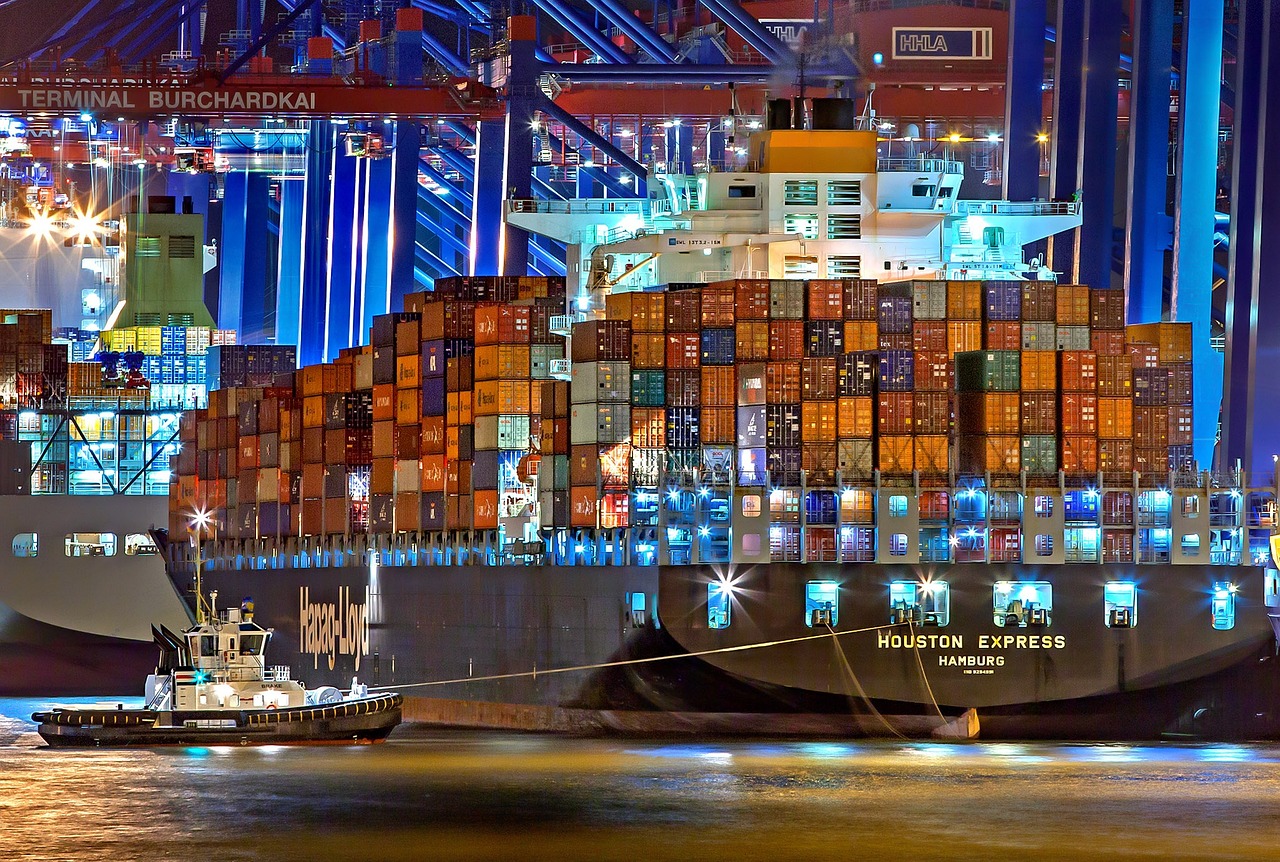
Herbs and Vegetables for Pots
Growing herbs and vegetables in pots is not just a rewarding experience; it's also a fantastic way to bring fresh flavors to your kitchen without needing a sprawling garden. Imagine stepping outside to snip a few basil leaves for your pasta or grabbing a handful of cherry tomatoes for a salad. Container gardening allows you to cultivate a variety of plants, no matter how limited your space may be. But what should you plant? Let’s dive into the best herbs and vegetables that thrive in pots!
When selecting herbs for your container garden, consider the following options that are not only easy to grow but also incredibly useful in the kitchen:
- Basil: A must-have for Italian dishes, basil loves warm weather and plenty of sunlight.
- Parsley: This versatile herb can be used in salads, soups, and garnishes. It thrives in partial shade, making it perfect for less sunny spots.
- Mint: Mint is a vigorous grower, so it's best to keep it in its own pot to prevent it from overtaking other plants.
- Thyme: This hardy herb is drought-resistant and adds a wonderful flavor to meats and vegetables.
Now, let’s talk about vegetables. Here are some top choices that do exceptionally well in pots:
- Cherry Tomatoes: These bite-sized delights are perfect for containers. They need a sunny spot and regular watering to produce a bountiful harvest.
- Bell Peppers: Compact varieties of bell peppers can thrive in pots, providing vibrant colors and crunch to your meals.
- Radishes: Fast-growing and low-maintenance, radishes can be sown in succession for a continuous harvest throughout the season.
- Lettuce: Leafy greens like lettuce are ideal for pots and can be harvested multiple times. They prefer cooler temperatures, so they’re perfect for spring and fall planting.
One of the keys to successful container gardening is understanding the specific needs of each plant type. For instance, while herbs generally prefer well-draining soil and consistent moisture, vegetables like tomatoes may require staking for support as they grow. Additionally, consider the size of your pots: larger pots hold moisture better and provide ample space for root growth, which is essential for the health of your plants.
Moreover, don’t forget about companion planting! Some herbs, such as basil, can enhance the growth of certain vegetables, while also helping to deter pests. This natural synergy can lead to healthier plants and a more fruitful garden. So, why not experiment with different combinations and see what works best for you?
In conclusion, growing herbs and vegetables in pots opens up a world of culinary possibilities right at your doorstep. With a bit of planning and care, you can enjoy the fruits (and herbs) of your labor throughout the growing season. Now, let's move on to some frequently asked questions to help you on your gardening journey!
Q: Can I grow vegetables in small pots?
A: Absolutely! Many vegetables, such as radishes and herbs, thrive in smaller pots. Just ensure they have enough sunlight and water.
Q: How often should I water my potted plants?
A: This depends on the plant type and weather conditions. Generally, check the soil moisture daily, and water when the top inch feels dry.
Q: Do I need to fertilize my potted herbs and vegetables?
A: Yes, potted plants benefit from regular fertilization, especially during the growing season. Use a balanced fertilizer to promote healthy growth.
Q: Can I grow herbs indoors?
A: Definitely! Many herbs can thrive indoors if they receive enough sunlight. Consider placing them near a south-facing window.
Frequently Asked Questions
- What type of pots are best for container gardening?
When it comes to choosing pots, you want to consider materials like clay, plastic, or ceramic. Clay pots are great for breathability, while plastic pots are lightweight and retain moisture better. Make sure your pots have drainage holes to prevent water from accumulating, which can lead to root rot.
- How do I know what soil mix to use for my potted plants?
Different plants have different soil needs. For instance, succulents prefer a gritty, well-draining mix, whereas herbs thrive in a rich, organic blend. A good rule of thumb is to use a potting mix that suits the specific plant type you’re growing, whether it’s flowers, vegetables, or herbs.
- How often should I fertilize my container plants?
Fertilizing frequency can vary based on the type of plants and the fertilizer used. Generally, you should fertilize every 4-6 weeks during the growing season. Organic fertilizers release nutrients slowly, while synthetic ones work faster. Always follow the instructions on the fertilizer package for best results!
- What are the best watering techniques for potted plants?
Watering can be tricky! A good technique is to check the top inch of soil; if it's dry, it's time to water. Use a watering can with a spout for precision, and consider bottom watering by placing pots in a tray of water for a while. Just remember, overwatering is a common mistake!
- Can I grow vegetables in pots?
Absolutely! Many vegetables thrive in containers. Consider compact varieties like cherry tomatoes, peppers, or lettuce. Just ensure your pots are large enough and provide adequate sunlight and drainage. It's like having your own mini garden right on your balcony!
- What’s the difference between annuals and perennials?
Annuals are plants that complete their life cycle in one growing season, while perennials come back year after year. If you want instant color and blooms, go for annuals. But if you prefer a garden that grows and evolves over time, perennials are the way to go!
- How do I choose the right plants for my pots?
Consider your local climate, the amount of sunlight your space receives, and the size of your pots. Some plants thrive in full sun, while others prefer shade. Make a list of plants that match your conditions and get ready to create a stunning container garden!



















